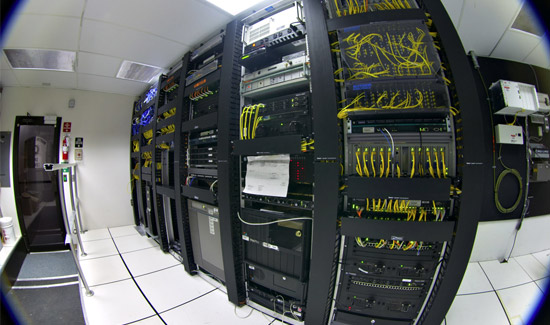
Laptops, desktops, mobile phone networks, the internet, the cloud, storage space for intranets, company servers, government databases… the list of virtual space that we need in this digital age is immense and as new online technologies develop we are going to need more and more data storage space and power to keep it operational. It isn’t just the devices where the actual data is stored either, many of the data centres that keep us connected to the world wide web also need to be kept cool and as we all know, air conditioning also uses a lot of power. It is said that Data Centres consume around 2% of the world’s power supply – and that is a lot. Internet use is expected to grow five-fold between 2011 and 2016.
Australia has until relatively recently been slow to look at IT and data centres as net consumers of power and how we might go about tackling the growing needs of tomorrow with the environmental issues of today.
Because of the special nature of data centres, the NABERS system for these particular types of premises took a lot of consultation over three years. Many agencies were involved in the development of the programme – national and international organisations – in order to fully understand the requirements of data centres.
The NABERS system for data centres varies from the other systems (office blocks, hotels and apartment blocks) due to the different requirements but it still uses the recognisable 1-6 system rating where 3 is the average and considered to be of typical consumption rate for buildings of that type.
As with every other building using the NABERS system, it is in the best interests of the data centre managers to reduce their power consumption as much as possible. As high volume users, energy bills are going to be amongst the most expensive per square metre of space of any building type. There are three types of NABERS ratings for data centres; it is important that you know which one applies to your organisation.
This is for those organisations that manage their IT equipment having no control over the support services (power and security) or those who prefer only to measure the efficiency of the IT equipment. It permits organisations to calculate the productive output of their data – comparing consumption with data capacity
This is aimed at site owners and managers and calculates the energy efficiency of the facilities in supplying the infrastructure to the equipment within the facility. This is suitable for businesses that rent out space for “colo” (co-location) but do not have operational control of the IT equipment
This rating combines both of the above ratings and is ideal for those businesses who manage both the building and the IT equipment. This is most suitable for businesses which own the building and pay the utility bills in which their IT server equipment is stored.
NABERS ratings are not mandatory for data centres but there are many benefits to your company for voluntary adoption of the scheme including how you might reduce your energy costs